含三稠环结构聚酰亚胺的研究现状
何思呈,王亚辉,黄 杰,钱心远,廖 波
(1 麓山国际实验学校,湖南 长沙 410006;2 株洲时代新材料科技股份有限公司,湖南 株洲 412007)
含三稠环结构聚酰亚胺的研究现状
何思呈1,王亚辉2,黄杰2,钱心远2,廖波2
(1 麓山国际实验学校,湖南长沙410006;2 株洲时代新材料科技股份有限公司,湖南株洲412007)
聚酰亚胺(PI)因其突出的热性能和综合性能,近年来在柔性有机电致发光器件(FOLED)封装领域越来越受到重视。本文介绍了国内外对含三稠环结构聚酰亚胺的研究现状;其中三稠环主要包括咔唑、芴、芴酮、二苯并呋喃和二苯并噻吩;详细介绍了三稠环结构对聚酰亚胺性能的影响;重点分析了三稠环结构与聚酰亚胺的热性能、溶解性能、光电性能的关系;展望了含三稠环结构聚酰亚胺的发展。
三稠环;聚酰亚胺;热性能
稠环化合物是两个或两个以上碳环或杂环以共有环边而形成的多环有机化合物。所谓三稠环就是三个碳环或杂环以共有环边而形成的三环有机化合物,常见的三稠环有:咔唑、芴、芴酮、二苯并呋喃和二苯并噻吩等,结构式如图1所示。

图1 常见的三稠环Fig.1 Common three fused ring
20世纪60年代以来,随着杂环聚合物研究的兴起,以及对高性能聚合物的需求,在聚酰亚胺分子结构中引入三稠环结构的研究得以开展。研究表明,三稠环结构被引入到聚酰亚胺分子链中,可明显提升聚酰亚胺的性能。在聚酰亚胺分子链中引入三稠环结构主要有两种方法,一种方法是通过合成带有含三稠环结构的单体进行聚合反应得到;另一种方法是先使用带有可生成含三稠环结构的反应基团的单体来制备聚酰胺酸前驱体,在酰亚胺化反应完成后再转化成相应的含三稠环结构。但是后一种方法因为需要更高的热处理温度而会导致聚酰亚胺降解和致密性下降,而不容易获得高性能的含三稠环结构的聚酰亚胺。因此,合成含三稠环聚酰亚胺基本是使用第一种方法。
本文关注的主要是对聚酰亚胺性能提升较大的三稠环结构(如:咔唑、芴、芴酮、二苯并呋喃和二苯并噻吩等)的引入对聚酰亚胺性能影响的研究。
1 含咔唑聚酰亚胺
咔唑是一种很重要的含氮原子芳杂环,具有特殊的刚性稠环结构,其衍生物表现出许多独特的光电性能。咔唑类化合物具有以下特点:(1)咔唑环易于形成相对稳定的正离子;(2)分子内具有较大的共轭体系及强的分子内电子转移;(3)一般具有较高的热稳定性和光化学稳定性;(4)咔唑环上易于进行结构修饰引入多种官能团。当前设计合成含有咔唑或其衍生结构的聚酰亚胺,主要是通过设计合成含咔唑结构的二胺单体[1-8],利用此二胺制备含咔唑结构的聚酰亚胺,这些聚酰亚胺都具有良好的热稳定性、光电性能和优异的存储功能。目前,报道较多的都是侧基含咔唑结构的聚酰亚胺。
Mousa Ghaemy等[1]合成了一种含咔唑结构二胺(DAC),结构式如图2所示,并与多种二酐通过二步法制备了聚酰亚胺。咔唑基团的引入使聚酰亚胺获得良好的热稳定性。这些聚酰亚胺的10%的分解温度范围达到524~574 ℃。

图2 含咔唑二胺(DAC)的结构式Fig.2 Chemical structure of diamine containing carbazole(DAC)
Samdae Park等[2]合成了一种含咔唑结构的二胺(HAB-CBZ),结构式如图3所示,并与多种二酐聚合制备了聚酰亚胺。咔唑基团的引入使聚酰亚胺获得优异的单极WORM存储行为;同时,这些聚酰亚胺也具有良好的热性能。Brian J. Ree[3]也利用此二胺做了类似的研究。Lei Shi等[4]合成了一种含咔唑结构二胺(DACzTPA),结构式如图4所示,与6FDA聚合制备了聚酰亚胺。咔唑基团与三苯胺基团作为供电子基团,6FDA作为吸电子基团,研究了聚酰亚胺的随机静态存储行为。
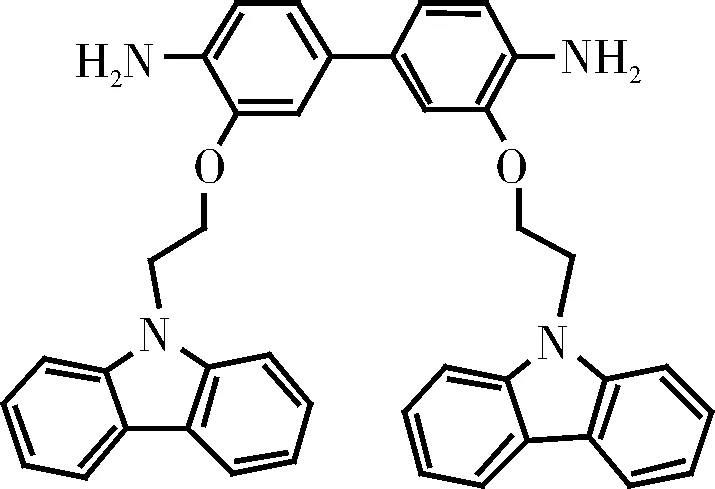
图3 含咔唑二胺(HAB-CBZ)的结构式Fig.3 Chemical structure of diamine containing carbazole(HAB-CBZ)
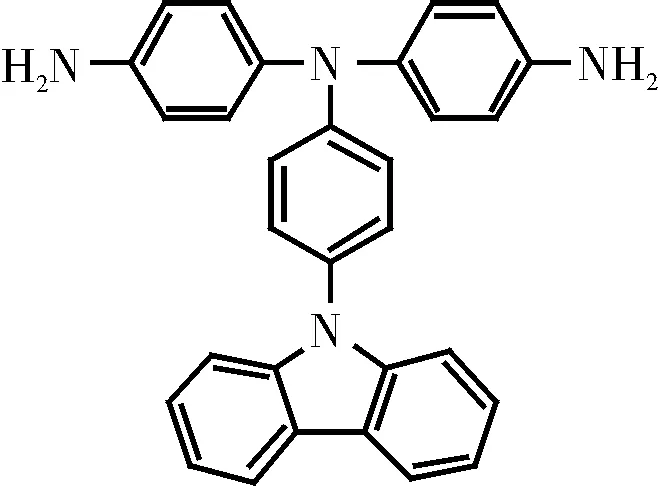
图4 含咔唑二胺(DACzTPA)的结构式Fig.4 Chemical structure of diamine containing carbazole(DACzTPA)
Sheng-Huei Hsiao等[5]合成了一种含咔唑结构的二胺,结构式如图5所示,并与多种二酐聚合制备了聚酰亚胺。含甲氧基的咔唑基团的引入使聚酰亚胺获得优异的电化学稳定性和电致变色性能,同时这些聚酰亚胺也具有良好的热性能。
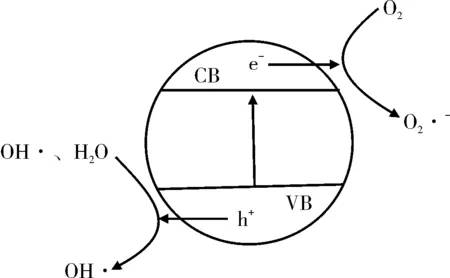
图5 含咔唑二胺的结构式Fig.5 Chemical structure of diamine containing carbazole
Ying-Chi Huang等[6]合成了一种含吡啶和咔唑结构的二胺(CBAPP),结构式如图6所示,并与多种二酐反应制备了聚酰亚胺。由于杂环吡啶和咔唑结构的引入,聚酰亚胺表现出良好的热氧化稳定性,优异的机械性能和光学性能。

图6 含咔唑二胺(CBAPP)的结构式Fig.6 Chemical structure of diamine containing carbazole(CBAPP)
但关于在主链中引入咔唑结构的聚酰亚胺只存在少量报道[9-12]。Xu Z K等[9-10]制备了一种主链含咔唑基团的共聚聚酰亚胺,此聚酰亚胺表现出一定的光导电性能;Kotov B V等[11]也做了类似的研究。Biswas M[12]等合成了一系列含咔唑结构的二胺,并与PMDA制备了一系列主链含咔唑结构的聚酰亚胺。这些聚酰亚胺表现出优异的热性能和介电性能。主链含咔唑结构聚酰亚胺的结构式如图7所示。
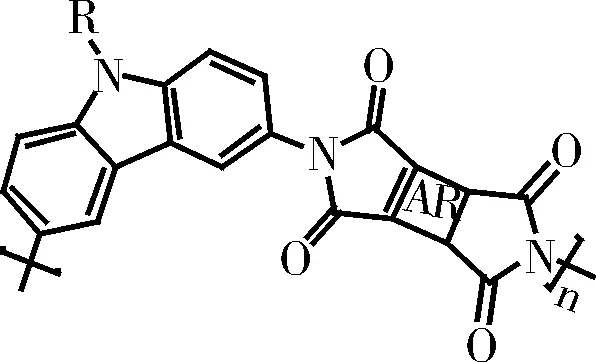
图7 主链含咔唑环聚酰亚胺的结构式Fig.7 Chemical structure of polyimide containing carbazole ring in backbone
2 含芴或芴酮聚酰亚胺
芴是一种常见三稠环,常见的衍生物为双苯基芴。由于大的双苯基芴结构的存在,能够赋予聚合物许多优异特性[13],例如:优异的热稳定性;高的玻璃化转变温度;良好的有机溶剂溶解性;低介电常数;优异的光电性能等。
正因为存在诸多优异特性,含芴基聚酰亚胺近年来被研究的越来越多。当前设计合成含有芴基或其衍生结构的聚酰亚胺,主要是通过设计合成含芴基的二胺单体。含芴基聚酰亚胺由于在主链上带有大的含芴侧基,芴基的刚性较大,阻碍了聚酰亚胺分子链的缠结,减少了链的旋转,降低了分子链堆砌密度,使其在气体分离膜[14-16]、低介电材料[17-19]、燃料电池质子传输膜[20-21]以及耐热、可溶、易加工的聚酰亚胺材料[22-31]等领域得到研究和应用。
Goto K等[19]制备了一系列含二苯基芴聚酰亚胺,并研究了其介电性能。如图8所示的含二苯基芴聚酰亚胺,其介电常数为2.71。研究表明二苯基芴的引入可以阻碍聚酰亚胺分子链的缠结,减少聚合物链的旋转,降低了分子链堆砌密度,聚合物具有较大的自由体积,从而使聚合物获得低的介电常数。

图8 二苯基芴聚酰亚胺的结构式Fig.8 Chemical structure of polyimide containing diphenyl fluorine
Xiaoxia Guo等[20-21]合成了一种磺化的9,9-双(4-氨基苯基)芴,并与商业化二酐合成了磺化聚酰亚胺,其具有较好的化学稳定性,应用于燃料电池质子交换膜。新型二胺的结构式如图9所示。

图9 二苯基芴聚酰亚胺的结构式Fig.9 Chemical structure of polyimide containing diphenyl fluorine
Sillion等[22-24]合成了一种含芴结构二胺9,9-双(4-氨基苯基)芴及其聚酰亚胺,这些聚酰亚胺表现出了良好的热性能、溶解性和低的吸水率。Teramoto等[25-27]使用含芴结构二胺制备了耐热可溶性聚酰亚胺和共聚聚酰亚胺。Ayukawa等[28]合成了一系列可热固化的含芴结构聚酰亚胺。Connell等[29]合成了苯乙炔基封端含芴结构聚酰亚胺齐聚物,用于树脂传递模塑用树脂。Hsiao等[30]合成了芴基二醚二酐,并与不同二胺反应得到了可溶性聚醚酰亚胺。Yang等[31]也由芴基二醚二胺与不同结构的二酐合成得到了一系列可溶性聚酰亚胺。
但关于在主链中引入含芴基团的聚酰亚胺报道较少[32]。Bell Vernon L[32]合成了一系列含芴或芴酮二胺,结构如图10所示,并与BTDA和PMDA聚合制备聚酰亚胺。由于这些聚酰亚胺分子链中含有大量苯环,刚性极大,具有优异的热稳定性。

图10 含芴或芴酮单元二胺的结构式Fig.10 Chemical structure of diamine containing fluorene or fluorenone
3 含二苯并噻吩和二苯并呋喃聚酰亚胺
二苯并噻吩和二苯并呋喃性质相似,都是一种具有芳香性的良好的电子给体,容易形成D-π-D或A-π-A体系,具有高电子密度和良好的刚性结构。近年来含二苯并噻吩和二苯并呋喃聚酰亚胺已有少量报道[33-35]。
Alain Tundidor-Camba等[33]制备了一种含二苯并呋喃结构的新型二胺(2,8-Di(3-aminophenyl)dibenzofuran),与BTDA、6FDA、SiDA聚合得到了三种PI。由于刚性结构二苯并呋喃结构的引入,三种PI都显示出良好的热性能。(2,8-Di(3-aminophenyl)dibenzofuran)的结构式如图11所示。
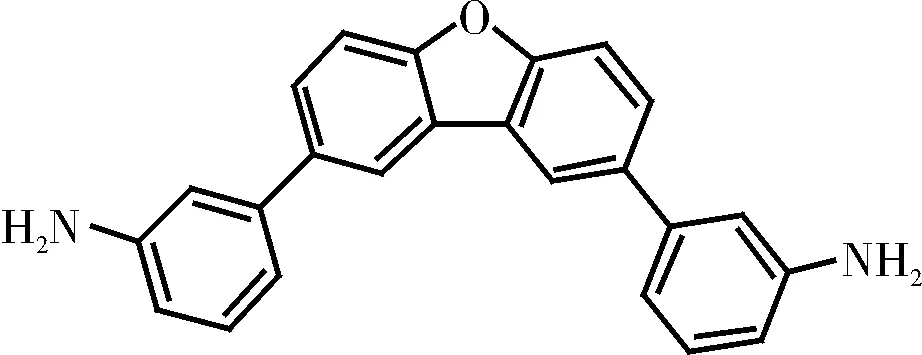
图11 含二苯并呋喃二胺的结构式Fig.11 Chemical structure of diamine containing dibenzofuran
Matsumoto T等[34]合成了两种含二苯并呋喃结构的二胺及其聚酰亚胺,二胺的化学结构如图12所示。由于聚酰亚胺分子主链中含有二苯并呋喃结构,导致聚酰亚胺具有优异的热稳定性和力学性能。

图12 含二苯并呋喃二胺的结构式Fig.12 Chemical structure of diamine containing dibenzofuran
Cheng-Liang Liu等[35]合成了两种含二苯并噻吩结构的新型二胺(2,8-APDBT和3,7-APDBT),并与6FDA反应制备了两种聚酰亚胺。二苯并噻吩结构作为聚酰亚胺中的电子供体,邻苯二甲酰亚胺作为电子受体,使其体现出优异的存储性能。2,8-APDBT和3,7-APDBT的结构如图13所示。

图13 含二苯并噻吩和二苯并呋喃的二胺的结构式Fig.13 Chemical structure of diamine containing dibenzothiophene and dibenzofuran
4 展 望
聚酰亚胺优异的综合性能使其在微电子、光电子等高新技术领域发挥着越来越重要的作用。随着我国经济蓬勃发展,市场对高性能聚酰亚胺的需求越来越大,综合考虑多种因素对聚酰亚胺结构进行设计,使其在不降低聚酰亚胺原有的良好热性能和力学性能的前提下,提升聚酰亚胺其他性能。含三稠环结构聚酰亚胺具有优异的综合性能,为开发高性能、低成本的聚酰亚胺提供发展方向。因此对于含三稠环结构聚酰亚胺的研究还是很有意义的。
[1]Ghaemy M, Alizadeh R, Behmadi H. Synthesis of soluble and thermally stable polyimide from new diamine bearing N-[4-(9 H-carbazol-9-yl)phenyl] formamide pendent group[J]. European Polymer Journal, 2009, 45(11):3108-3115.
[2]Park S, Kim K, Jin C K, et al. Synthesis and nonvolatile memory characteristics of thermally, dimensionally andchemically stable polyimides[J]. Polymer, 2011, 52(10):2170-2179.
[3]Ree B J, Wonsang K, Kyungtae K, et al. Clues to the electrical switching mechanism of carbazole-containing polyimide thin films.[J]. Acs Applied Materials & Interfaces, 2014, 6(23):21692-21701.
[4]Hsiao S H, Peng S C, Kung Y R, et al. Synthesis and electro-optical properties of aromatic polyamides and polyimides bearing pendent 3,6-dimethoxycarbazole units[J]. European Polymer Journal, 2015, 73:50-64.
[5]Shi L, Tian G, Ye H, et al. Volatile static random access memory behavior of an aromatic polyimide bearing carbazole-tethered triphenylamine moieties[J]. Polymer, 2014, 55(5):1150-1159.
[6]Huang Y C, Wang K L, Lee W Y, et al. Novel heterocyclic poly(pyridine-imide)s with unsymmetric carbazole substituent and noncoplanar structure: High thermal, mechanical and optical transparency, electrochemical, and electrochromic properties[J]. Journal of Polymer Science Part A Polymer Chemistry, 2014, 53(3):405-412.
[7]Liaw D J, Wang K L, Huang Y C, et al. Advanced polyimide materials: Syntheses, physical properties and applications[J]. Progress in Polymer Science, 2012, 37(7):907-974.
[8]Mathews A S, Kim D, Kim Y, et al. Synthesis and characterization of soluble polyimides functionalized with carbazole moieties[J]. Journal of Polymer Science Part A Polymer Chemistry, 2008, 46(24):8117-8130.
[9]Xu Z K, Zhu B K, Xu Y Y. Photoconductivity of Copolyimide Films Containing Tetraphenylporphyrin and Carbazole Moieties[J]. Chemistry of Materials, 1998, 10(5):1350-1354.
[10]朱宝库,徐又一,徐志康.含四-苯基卟啉基团聚酰亚胺膜的光电导性能研究[J].功能高分子学报,2003,16(2):142-148.
[11]Kotov B V, Gordina T A, Voishchev V S, et al. Aromatic polyimides as charge transfer complexes[J]. Polymer Science U.s.s.r, 1977, 19(3):711-716.
[12]Biswas M, Das S K. Polypyromellitimides based on carbazole and substituted carbazoles[J]. European Polymer Journal, 1982, 18(11):945-948.
[13]Korshak V V. Cardo Polymers[J]. Journal of Macromolecular Science Part C Polymer Reviews, 1974, 11(1):45-142.
[14]Hiarayama Y, Kazama S, Fujisawa E, et al. Novel membranes for carbon dioxide separation[J]. Energy Conversion & Management, 1995, 36(6):435-438.
[15]Kazama S, Sakashita M. Gas separation properties and morphology of asymmetric hollow fiber membranes made from cardo polyamide[J]. Journal of Membrane Science, 2004, 243(s 1-2):59-68.
[16]Kazama S, Teramoto T, Haraya K. Carbon dioxide and nitrogen transport properties of bis (phenyl) fluorene-based cardo polymer membranes[J]. Journal of Membrane Science, 2002, 207(1):91-104.
[17]Goto K, Kakuta M, Inoue Y. Low Dielectric and Thermal Stable Polyimides with Fluorene Structure[J]. Journal of Photopolymer Science & Technology, 2000, 13(2):313-315.
[18]Goto K, Inoue Y, Matsubara M. Low Dielectric and Thermally Stable Polyimides with Fluorene Structure(II) Relationship between Chemical Structure and Dielectric Constant[J]. Journal of Photopolymer Science & Technology, 2001, 14(1):33-36.
[19]Goto K, Akiike T, Inoue Y, et al. Polymer design for thermally stable polyimides with low dielectric constant[J]. Macromolecular Symposia, 2003, 199(1):321-332.
[20]Jianhua Fang, Xiaoxia Guo, Satoshi Harada, et al. Novel Sulfonated Polyimides as Polyelectrolytes for Fuel Cell Application. 1. Synthesis, Proton Conductivity, and Water Stability of Polyimides from 4,4’-Diaminodiphenyl Ether-2,2’-disulfonic Acid[J]. Macromolecules, 2002, 35(24):9022-9028.
[21]Guo X, Fang J, Watari T, et al. Novel Sulfonated Polyimides as Polyelectrolytes for Fuel Cell Application. 2. Synthesis and Proton Conductivity of Polyimides from 9,9Bis(4-aminophenyl)fluorene-2,7-disulfonic Acid[J]. Macromolecules, 2002, 35(17):6707-6713.
[22]Boiteux G, Oraison J M, Seytre G, et al. Soluble polyimides with specific dielectric behavior[A].Polymides and Other High-Temperature Polymers[C]. 1991: 437-446.
[23]Nathalie Biolley, Martine Grégoire, Thierry Pascal, et al. Synthesis and characterization of a linear CARDO polyimide from (5,5′-bisisobenzofuran)-1,1′,3,3′-tetrone and 4,4′-(9 H -fluoren-9-ylidene)bisphenylamine[J]. Polymer, 1991, 32(17):3256-3261.
[24]Dutruch L, Pascal T, Durand V, et al. Toughening of a High-performance Bis-nadimide Thermoset by Blending with High-Glass Transition Temperature Linear Polyimides[J]. Polymers for Advanced Technologies, 1997, 8(1):8-16.
[25]Teramoto T, Harada K, Inoue H. Heat-resistant polyamide from bis(4-aminophenyl)fluorene: , US 4794159 A[P]. 1988.
[26]Teramoto T, Harada K, Inoue H. Soluble copolyimide from 9,9-bis (4-amino phenyl) fluorene: , US4845185[P]. 1989.
[27]Teramoto T., Harada K.. Heat-resistant organic solvent-soluble aromatic polyamide-polyimides[P]. JP 63309525, 1988-12-16.
[28]Minami K, Ayukawa H, Suwa T, et al. Cured fluorenyl polyimides: US, US6417321[P]. 2002.
[29]Connell J W, Smith J G, Hergenrother P M. Composition of and method for making high performance resins for infusion and transfer molding processes: US, US6359107[P]. 2002.
[30]Hsiao S H, Li C T. Synthesis and characterization of new fluorene-based poly(ether imide)s[J]. Journal of Polymer Science Part A: Polymer Chemistry, 1999, 37(10): 1403-1412.
[31]Yang C P, Chiang H C. Organosoluble and light-colored fluorinated polyimides based on 9,9-bis[4-(4-amino-2-trifluoromethylphenoxy)phenyl]fluorene and aromatic dianhydrides[J]. Colloid & Polymer Science, 2004, 282(12):1347-1358.
[32]Bell, Vernon L. Polyimide structure-property relationships. I. Polymers from fluorene-derived diamines[J]. Journal of Polymer Science Polymer Chemistry Edition, 1976, 14(1):225-235.
[33]Tundidorcamba A, Terraza C A, Tagle L H, et al. Novel aromatic polyimides derived from 2,8-di(3-aminophenyl)dibenzofuran. Synthesis, characterization and evaluation of properties[J]. Rsc Advances, 2015, 5(87):71052-71059.
[34]Matsumoto T, Nishimura K, Kurosaki T. Ladder-type polyimides based on diaminodibenzofurane[J]. European Polymer Journal, 1999, 35(35):1529-1535.
[35]Liu C L, Kurosawa T, Yu A D, et al. New Dibenzothiophene-Containing Donor-Acceptor Polyimides for High-Performance Memory Device Applications[J]. Journal of Physical Chemistry C, 2011, 115(13):5930-5939.
Research Status of Polyimide Containing Three Fused Ring Structure
HESi-cheng1,WANGYa-hui2,HUANGJie2,QIANXin-yuan2,LIAOBo2
(1 Lushan International Experimental School, Hunan Changsha 410006;2 Zhuzhou Times New Material Technology Co., Ltd., Hunan Zhuzhou 412007, China)
In recent years, polyimide(PI) has attracted more and more attention in the field of flexible Organic Light-Emitting Diode (FOLED) package due to its outstanding thermal performance and comprehensive performance. The research status of polyimide containing three fused ring structure at home and abroad was introduced, three fused ring mainly included carbazole and fluorene fluorenone, dibenzofuran and dibenzothiophene. The effects of three fused ring structure on the properties of polyimide were introduced in detail, the relationship between the thermal properties, the solubility and the photoelectric properties of polyimide containing three fused ring structure were mostly analyzed, the development of polyimide containing three fused ring structure was discussed.
three fused ring; polyimide; thermal property
O631.2
A
1001-9677(2016)018-0023-04

